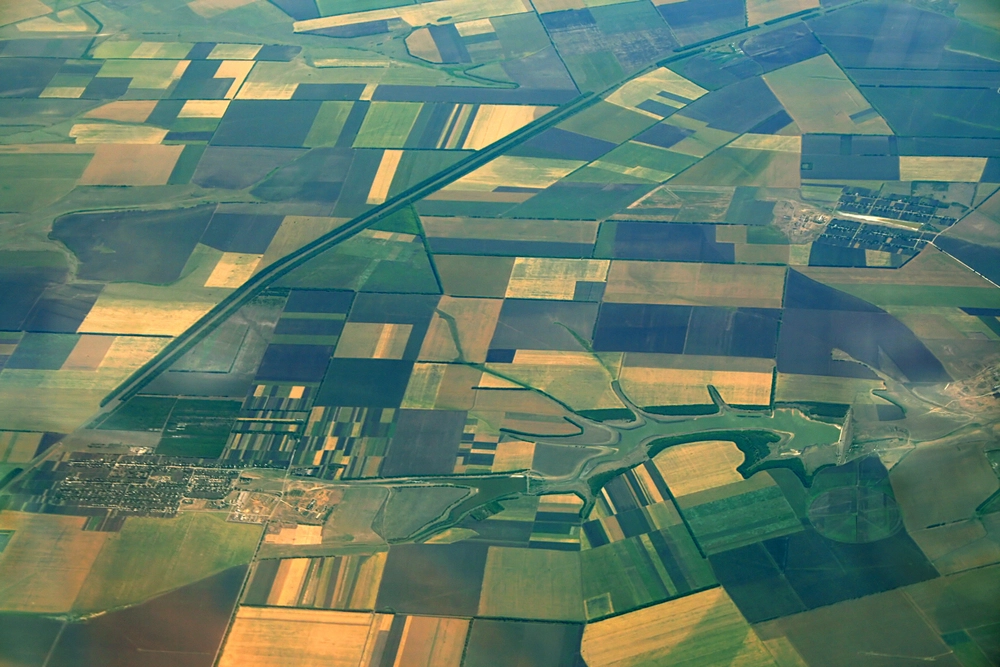The 2022 Census of Agriculture was released this week, reporting increased farm profits but decreased farmland. Vilsack calls the data “a wakeup call.”

Across the country, the US has lost both farms and farmland, according to the latest data from the 2022 USDA Census of Agriculture, released this week. (The census is taken every five years, and USDA statisticians spend time collecting and analyzing the data afterwards, so the results take some time to deliver.) The US is now home to about 880 million acres of farmland, down from 900 million at the time of the last census in 2017. That’s 20 million acres, or as Secretary of Agriculture Tom Vilsack puts it, every state in New England except Connecticut.
The number of farms themselves has also declined from 2017 to 2022, down roughly 142,000 to 1.9 million farms. The last time the country saw numbers this small was 1850. However, the size of the average farm has increased, up five percent.
Farmland now makes up roughly 39 percent of the country, and it has been dropping for decades. Presenting this data Tuesday afternoon, Vilsack says the trend is worrying. The survey, he says, is “a wakeup call” that is “asking us the critical question of whether we as a country are OK with losing that many farms.” Vilsack also notes that the majority of American farmers currently rely on a second off-farm income to supplement their farming income. Vilsack supports diversifying farmers’ income streams to create a “different model” of farming and help prevent the loss of more farmland. “I sincerely hope that we take this information very seriously,” says Vilsak. “It need not be that every five years we report fewer farms and less farmland. It doesn’t have to be.”
The census collects and details all sorts of information about American agriculture, in order to paint a picture of the industry as a whole. Here are three of our top takeaways from the data.
Income is going up
Farms and ranches produced $543 billion worth of agricultural products in 2022, up from $389 billion in 2017. As well, the average farm income has gone up, weighing in at $79,790. A little less than half of farms (43 percent) reported positive net cash income in 2022.
Those numbers could be a sign of the overall inflation in food prices and general cost of living increases since 2017. It could also be a reflection of the overall consolidation of farms—fewer farms, especially smaller farms, mean larger operations are left with less competition. The data shows that there was an increase in farms that had three or more producers between 2017 and 2022 and a decrease in the number of farms with one or two producers.
There are more new farmers, but not necessarily young ones
The average age of the American farmer rose to 58.1 years old in 2022, up 0.6 years from 2017. This is in line with a longer-term trend of an increased average farming age. But as the average farmer gets older, this census also recorded that nearly one-third of all producers are “new” or “beginning”—meaning they’ve been in the business for 10 years or less.
However, newer doesn’t mean younger. The average age of a new farmer was 47.1 years old. This could be in part due to the financial access barriers of getting into farming without a secondary income or fiscal stability.
You can read more about how young farmers are pushing for access to farmland here.
More farms have internet access
The 2022 census reports that 79 percent of farms now have internet access, which is up from 75 percent in 2017. Access to the web is important for farmers to stay competitive and be able to use modern, up-to-date equipment. This is especially true as precision agriculture technology continues to find its place on farms. The 2018 Farm Bill included investments into rural broadband, and the current version of the bill is set to expire in September of 2024.
To read more about the fight to get internet access to more rural areas of the country, check out our feature “We’re Cut Off.”
The only common cause In this country is greed. If someone can buy farmland and build houses, they make a lot of money and could care less about the consequences. The biggest threat to the world today, China, should not be permitted to buy farmland in this country.
A world wide trend
New Zealand here
Maybe we shouldn’t let hedge funds buy farmland
Yes, It is a wake up call. It will continue to happen world over since the LAND mass is fixed entity and compitative demand for land for various purposes ( housing, communication, water storage, industries etc,) keep on increasing . Hence, we as human beings will have to increase the productivity from each unit of land to meet ever increasing food demand.